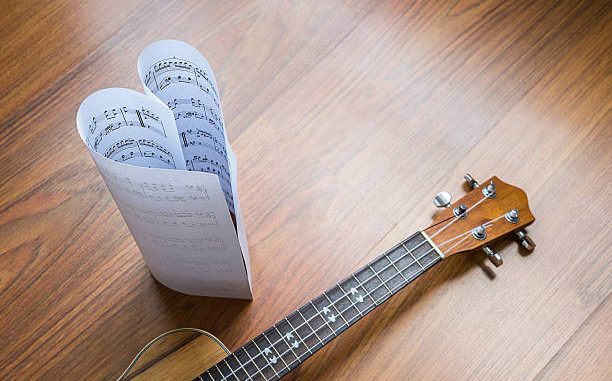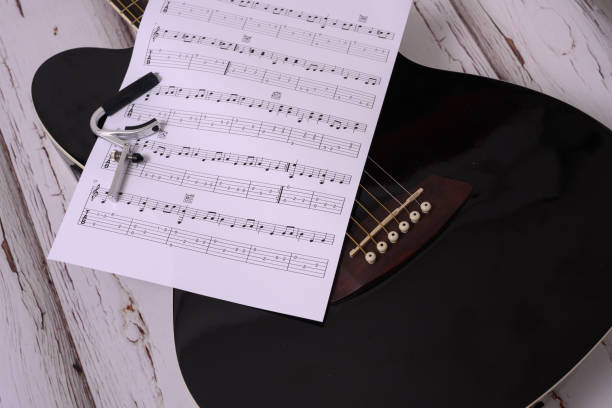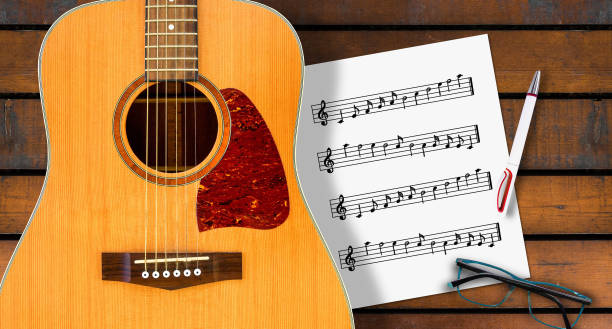
How to Read Guitar Tabs
The best one for most people is no sheet music at all; tabs will help if you want to play songs on guitar but the notes scare you. From a musical standpoint, it allows you to have endless possibilities painted out for you what you want them to be, which results in the ability to master tunes musically in the shortest period possible. Get to know guitar tabs rolled in one place and learn how to read the guitar tabs step by step as well. Even if you’ve never picked up a guitar in your life or if you’ve just been learning tabs, this is all the information you will ever need on guitar tabs.

What Are Guitar Tabs?
Now the problem arises to understand how to read guitar tabs. Guitar tablature, or “tabs,” is a form of note writing that is especially used on fretted string instruments such as guitars. Information such as the note letter, clef, and key signature are placed in tabs in such a manner that it does not require you to play those pieces while reading music from the staff of music in the same way that is expected of you for other pieces of music. Instead, they show you the figure of a guitar on which the string and fret are visible to the viewer. You become informed as to where to place your fingers to sing a particular tune.
The Basics: Understanding the Tab Layout
To start learning how to read guitar tabs, you need to familiarize yourself with the basic layout:
Six Lines:
Usually, a standard guitar tab is comprised of six horizontal lines that correspond to the strings of a guitar.
String Order:
These points indicate the strings on the guitar as they progress from the top downwards; the thickest string being the low E, followed next by the second thin string, the high E.
Numbers:
Along such lines, you obtain the numbers indicating the fret to be played on this particular string.
How to read guitar tabs: Step-by-Step
Step 1: Identify the Strings
When learning how to read guitar tabs, start by remembering the string order:
- Top line: Low E (6th string)
- Second line: A (5th string)
- Third line: D (4th string)
- Fourth line: G (3rd string)
- Fifth line: B (2nd string)
- Bottom line: High E (1st string)
Step 2: Understand the Numbers
The numbers on the horizontal lines indicate the fret on the string you need to press. For example:
“`
e|—0—|
B|—1—|
G|—0—|
D|—2—|
A|—3—|
E|——|
“`
This tab shows:
Fingering on the bottom four strings and opting for the G-shaped barre chord This time play the open high E string up on the top line 0.
- For this, now press the 1st fret on the B string.
- Play the open G string.
- Place your finger on the second fret of the D string, pressing it lightly to the fret.
- If you press the 3rd fret on the A string
- E low string is not sounded at all (I did not give it a number).
Step 3: Reading Left to Right
When learning how to read guitar tabs, always be aware that they are aligned to be read in a right-to-left manner, just like ordinary texts. This means that each set of horizontal alignment corresponds to a chord or note to be played concurrently, while separate numbers segregated by the horizontal direction refer to the sequence of notes.
Step 4: Special symbols
As you delve deeper into how to read guitar tabs, you’ll encounter various symbols that represent techniques:
- “h” for hammer-on
- “p” for pull-off
- “b” for bend
- “/” for slide up
- “\” for slide down
- “~” for vibrato
These symbols are explained to ensure that the meanings behind more elaborate tabs are not misjudged.
Tablatures Utilizing Complex Techniques
Once you’ve mastered the basics of how to read guitar tabs, you can explore more advanced notations:
Chords in Tabs
Chords are represented by stacked numbers, indicating that multiple strings should be played simultaneously.
“`
e|—0—|
B|—1—|
G|—0—|
D|—2—|
A|—3—|
E|—3—|
“`
On this tab, there is an indication of the G major chord.
Rhythm Notation
Some tabs are as follows: Rhythm indication above the tab lines where the use of notes of standard relative magnitude to other notes is made as shown below pic. This addition can greatly help with how to read guitar tabs with appropriate rhythm.
Common Mistakes to Avoid
As you’re learning how to read guitar tabs, watch out for these common pitfalls:
Ignoring String Muting:
Some strings are even not always played or used; they just make up the looks of it. Keep an eye on the dash (-) sign that means a sting should not be played or should be muted.
Overlooking Repeated Sections:
With regards to tabs, many of them incorporate the use of repeat signs (//).
Misinterpreting Timing:
One deficiency that arises from the absence of clear indications is confusion in the timing of notes. Watch the YouTube video to know the beat of the song.
A Guide to Enhancing Tab-Reading Expertise
Start Simple:
Start with simple songs, and then as you progress, you can teach your students advanced songs.
Practice Regularly:
Routine is the way to go if you want to enhance your efficiency in reading tabs.
Learn Music Theory:
This is not essential here, but it would be of help to be able to relate to more complicated tabs.
Use Online Resources:
Almost all websites for learning how to read guitar tabs provide interactive tabs through which users can listen to the notes as they read them.
Conclusion
Learning how to read guitar tabs is an outstanding factor for any guitarist. The techniques it demonstrates are easy to understand since many do not require a deep understanding of music theory. With the understanding of the basic level, if one learns how to interpret the numbers and symbols in the appendix and if one practice, then they can play all the songs that they have an interest in without much of a problem.

As the how-to-read guitar tabs process of learning continues, just remember that it goes on. When you read new symbols and encounter more complicated patterns, don’t hesitate to look for some extra information or turn to the masters. And over time you will discover that with tabs, playing the guitar comes with unique techniques that enable you to convey an emotion through your strings.
FAQs
To what extent does it take to learn how to read guitar tabs?
As is known, the processes of learning how to read guitar tabs differ from one person to another. Newbies may be able to play basic songs from tabs in a few hours of practice, while enhanced tabs may be accomplished in weeks or even months. It therefore goes without saying that practice forms the basis of making great strides in any field.
Is tabs on guitar the same whether one is playing the acoustic or electric guitar?
With how to read guitar tabs, yes, and the basic principle is the same whether the instrument involved is the acoustic guitar or the electric guitar. The main difference is the technique and effects that may be noted, as the use of electric guitars results in more effects on instruments specific to the usage of the said technology in recording. There is, however, some similarity between the tab layout and the reading process regarding both the standard and the acoustic guitars.
Access the free trial page
Click this link to access the GuitarTricks.com Free Trial page >>
Click here to access the GuitarTricks.com Free Trial >>
Leave a Reply